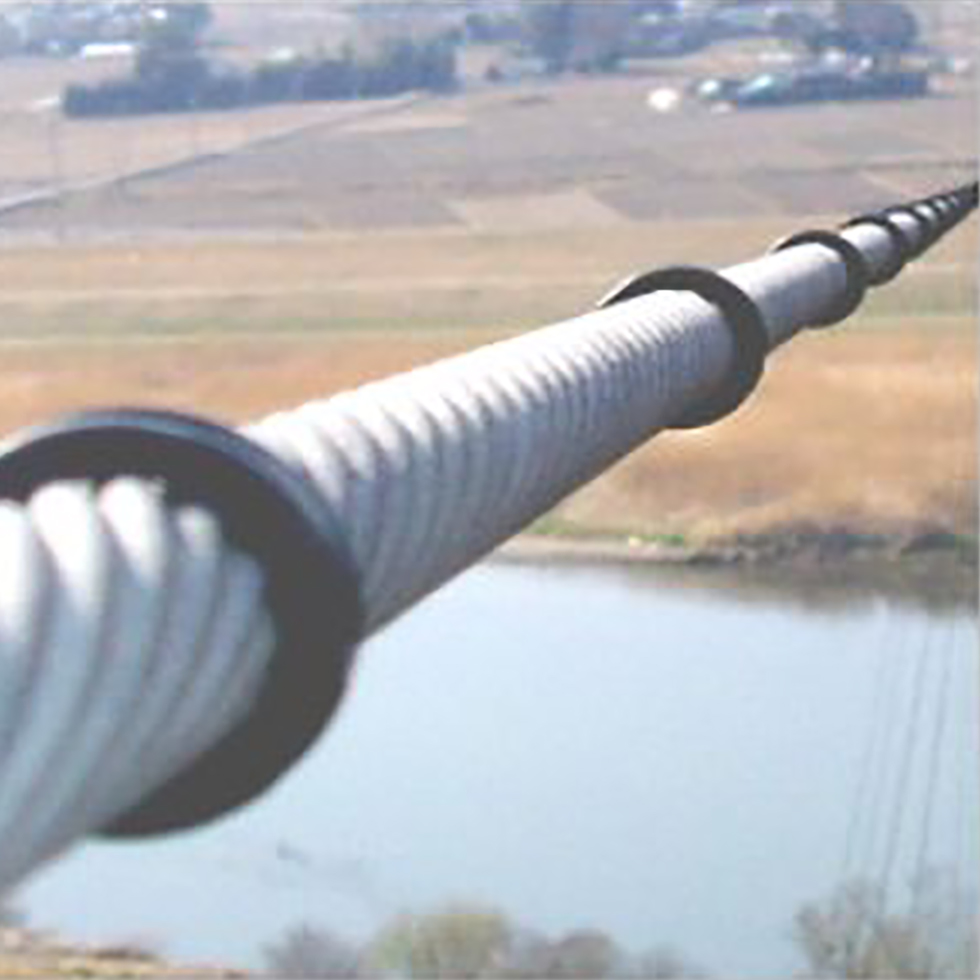Supply Network Maintenance
Measures for a Stable Supply
We have created a mesh network of routes for power transmission lines in order to make sure the power can still be transmitted via other routes if one of them does not work. This is to ensure a stable supply network that can withstand disasters. Furthermore, our are striving to minimize power outage areas and deal with power outages as quickly as possible by providing an automatic power outage recovery system, stationing operators at the site 24 hours a day to switch between systems, and also by dispatching permanent maintenance workers to disaster areas in order to provide emergency assistance and help with the recovery efforts in a particular area.
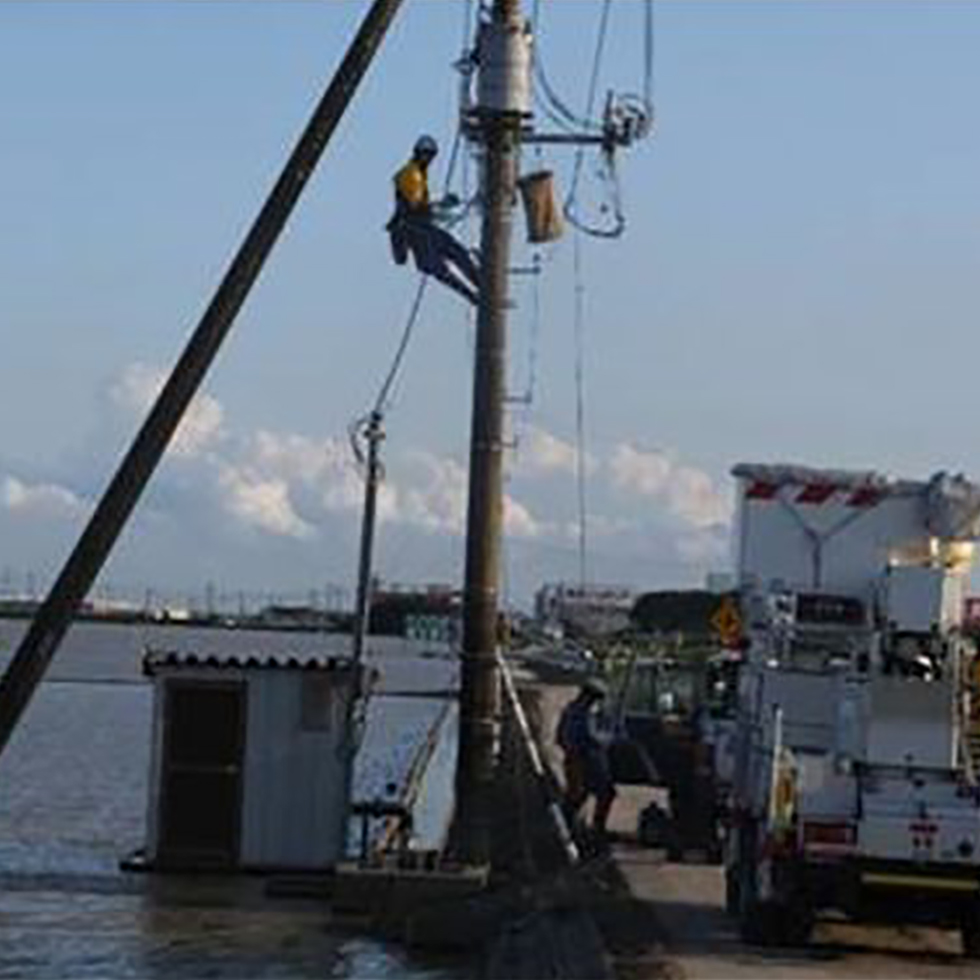
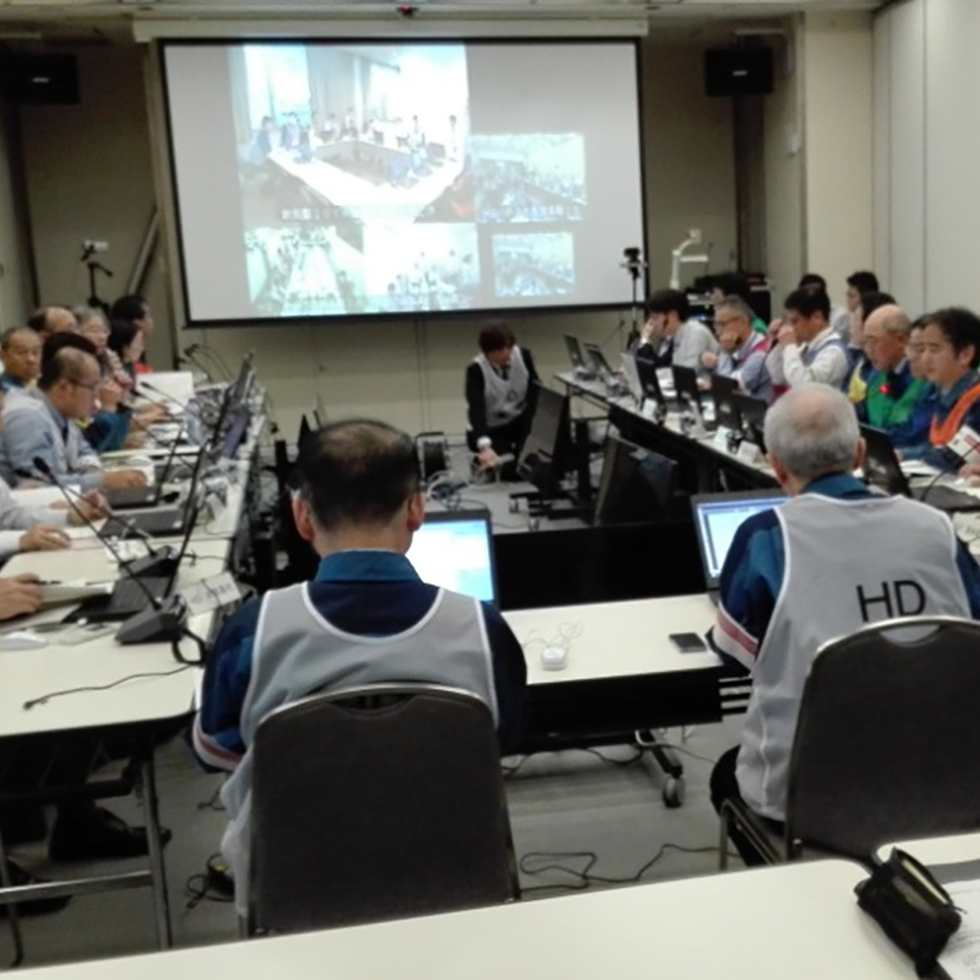
Emergency Training for Disasters
In addition to company internal information and disaster recovery training, TEPCO participates in disaster training carried out by national and local governments, as well as periodic training in equipment lending with other electricity companies. The goals of these types of training are to prepare for large-scale disasters by being able to determine the proper response to the disaster by rapidly and accurately ascertaining the status of damaged facilities, power outage effects, requests from related organizations, and similar information in order to determine how to temporarily restore damaged facilities to provide emergency power transmission, how to effectively deploy recovery equipment and personnel, and similar response measures.
Shin-Shinano Substation: Increased Capacity of Frequency Conversion Equipment
Due to the differences in the frequency of generated power between eastern Japan (three regions of Hokkaido, Tohoku, and Kanto) and western Japan (six regions including Chubu and Kansai), the size of generated power shared between eastern and western regions is limited. It is currently limited to 1.2 million kW. Accordingly, TEPCO Power Grid is carrying out construction to increase the capacity of the frequency conversion equipment of the Shin-Shinano Substation in order to reach the FY 2020 goal of reinforcing the interconnection capacity between western and eastern regions by 900,000 kW for a total of 2.1 million kW.
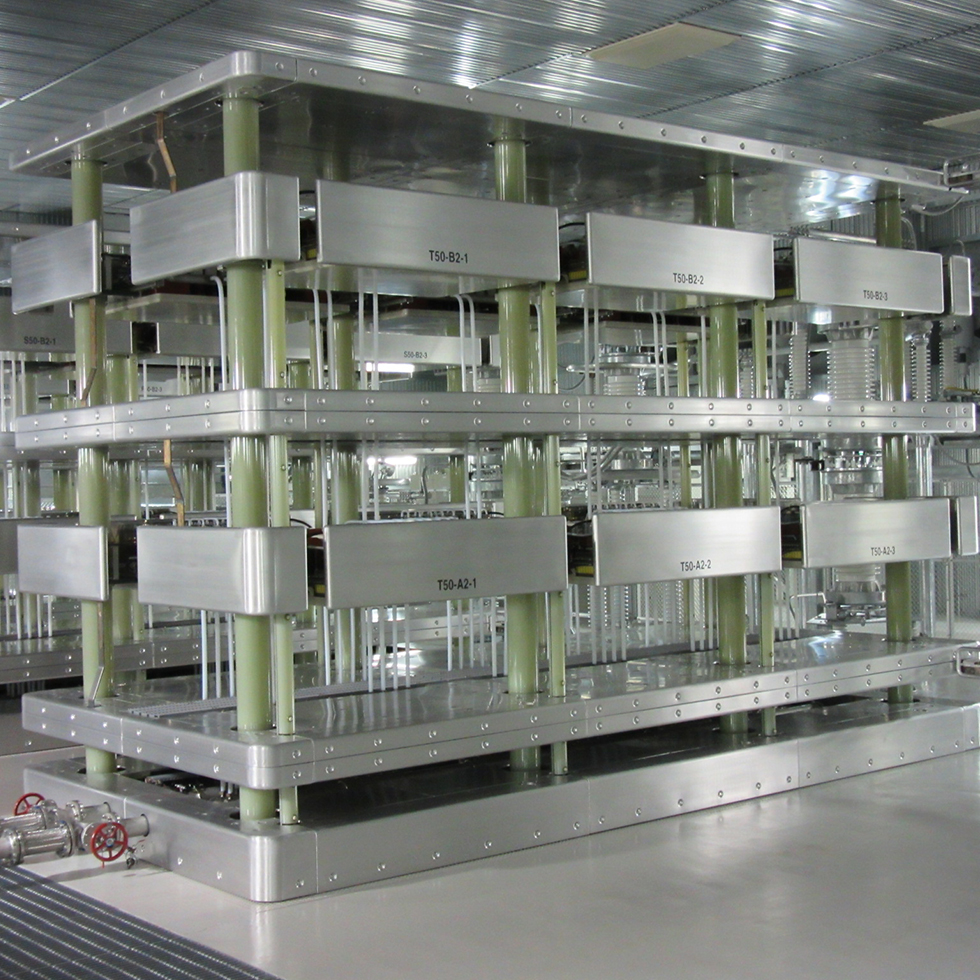
Construction of DC Transmission Lines in Order to Interconnect Systems with Chubu Electric Power
The newly constructed DC transmission lines connect the frequency conversion equipment installed at the Shin-Shinano Substation (Asahi-mura, Nagano Pref.) with the same type of equipment installed near the 500,000-V Etsumi Trunk Line (in Takayama City) of Chubu Electric Power. A study of the routes was conducted for about a year and a half starting from Jan. 2013. As a result, it is expected that the total length will be approximately 90 km and some 200 to 250 towers with an average height between 50 and 60 meters will be installed.
Natural Disaster Countermeasures
We are implementing a variety of facilities countermeasures to minimize the damage to power facilities and provide our customers with a stable supply of electricity in anticipation of various possible natural disasters. Even if a natural disaster results in a power outage, we can switch the supply of electricity to a separate transmission system or substation thanks to our overall system configuration that greatly limits the effects of a power outage.
Earthquake
All of our facilities and equipment has been designed in accordance with guidelines for electrical technology, technical standards for electrical facilities, and similar standards in regards to earthquakes so that they all possess general earthquake resistance. We have also given consideration to other disasters that accompany an earthquake such as liquefaction and landslides, and we are improving earthquake resistance of facilities accordingly by measures such as reinforcing the foundations of towers, and using flexible materials for some underground structures such as underground transmission lines.
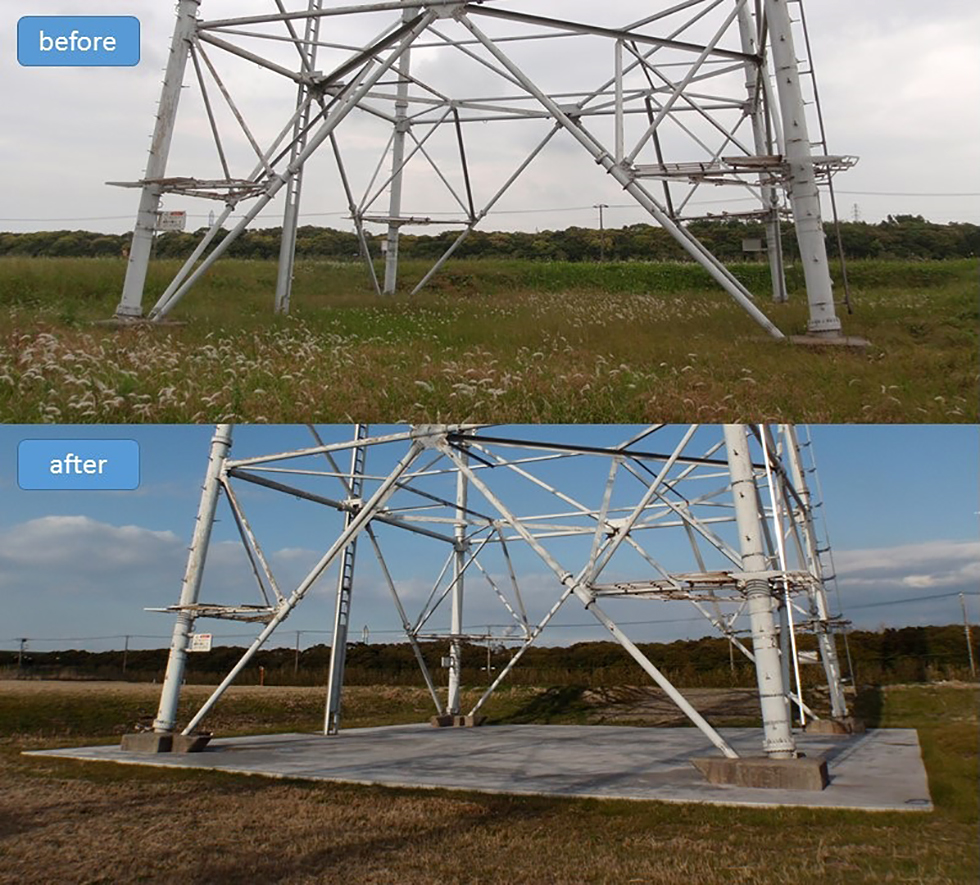
Water Damage (High Tide, River Flooding, Tsunami)
We are implementing countermeasures against water damage, such as that caused by high tides that accompany typhoons and river flooding from heavy rain, to serve as prior countermeasure that enable power to be supplied even if the water level reaches power generating machinery. These countermeasures include making the buildings housing electrical equipment impermeable (such as by the use of tide gates and watertight doors), elevating live parts, and providing devices with a waterproof/water-resistant structure.
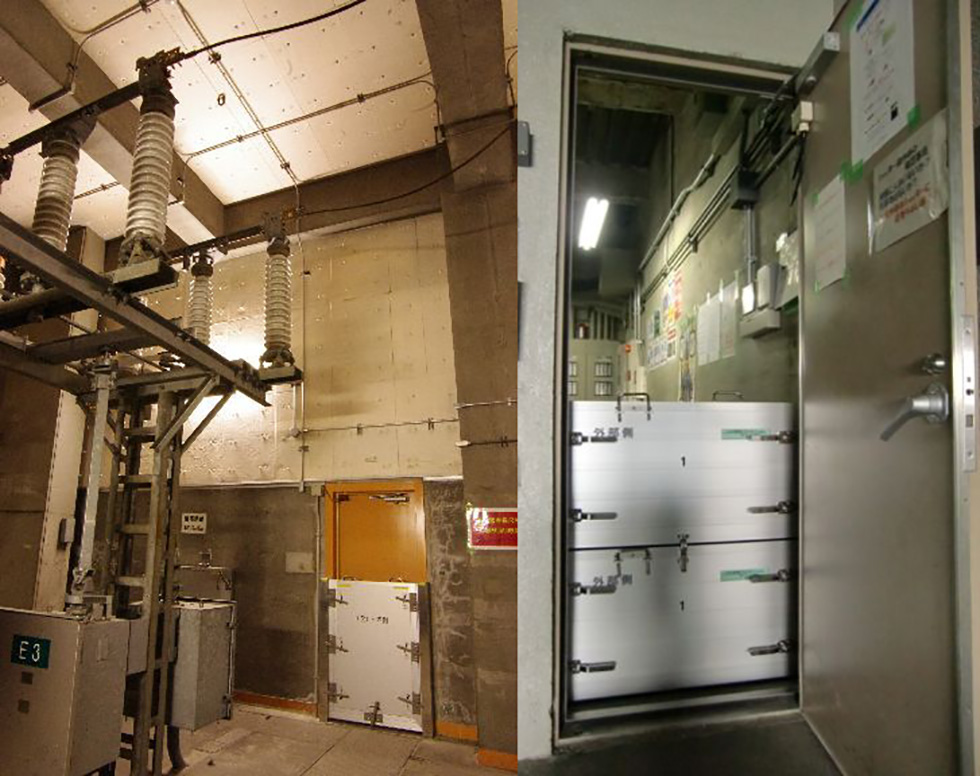
Salt Damage
Salt adhering to transmission lines or the insulators that serve as insulation for transformer devices, due to causes such as typhoon or salty sea winds, causes the insulation of insulators to deteriorate, possibly resulting in a power outage. In areas where there is a high possibility of salt damage, TEPCO Power Grid is cleaning the insulators of live lines before and after typhoons, adopting use of insulators to which salt does not readily adhere, and similar countermeasures to prevent power outages due to salt damage.
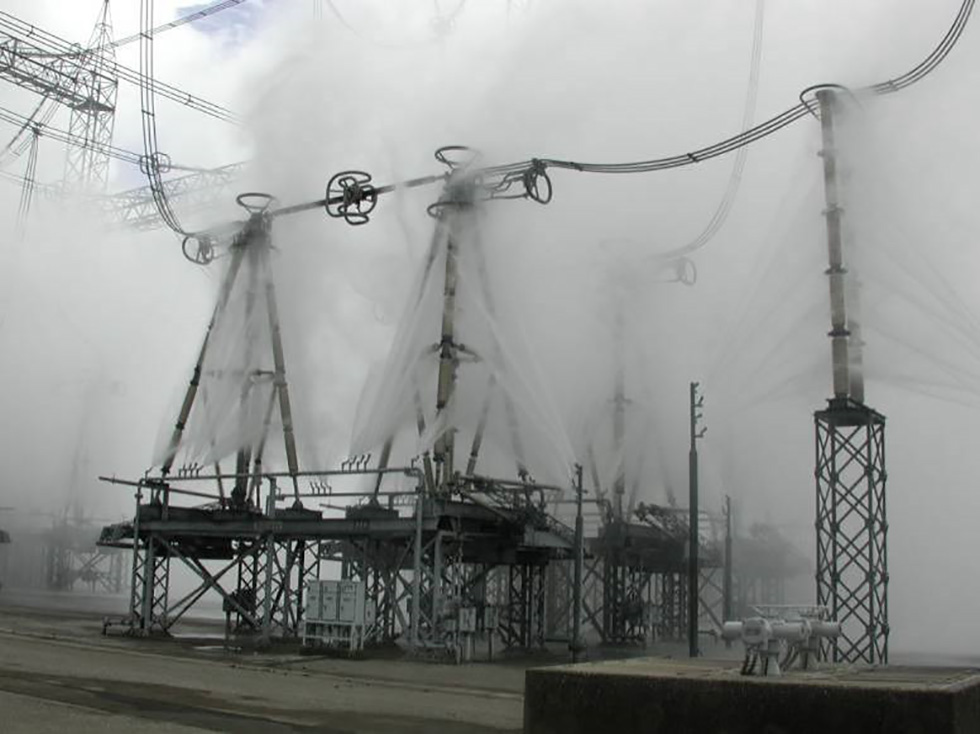
Snow Damage
The weight of snow adhering to transmission lines can result in disconnected or severed lines. Additionally, the wind can cause transmission lines to which snow is adhering to swing greatly, resulting in the transmission lines jumping about as the adhering snow falls off, thereby possibly causing a short circuit if contact is made with adjacent transmission lines. TEPCO Power Grid is implementing countermeasures such as installing rings that prevent adhering snow from piling up (snow-resistant rings) and spacers of insulation material between lines.
